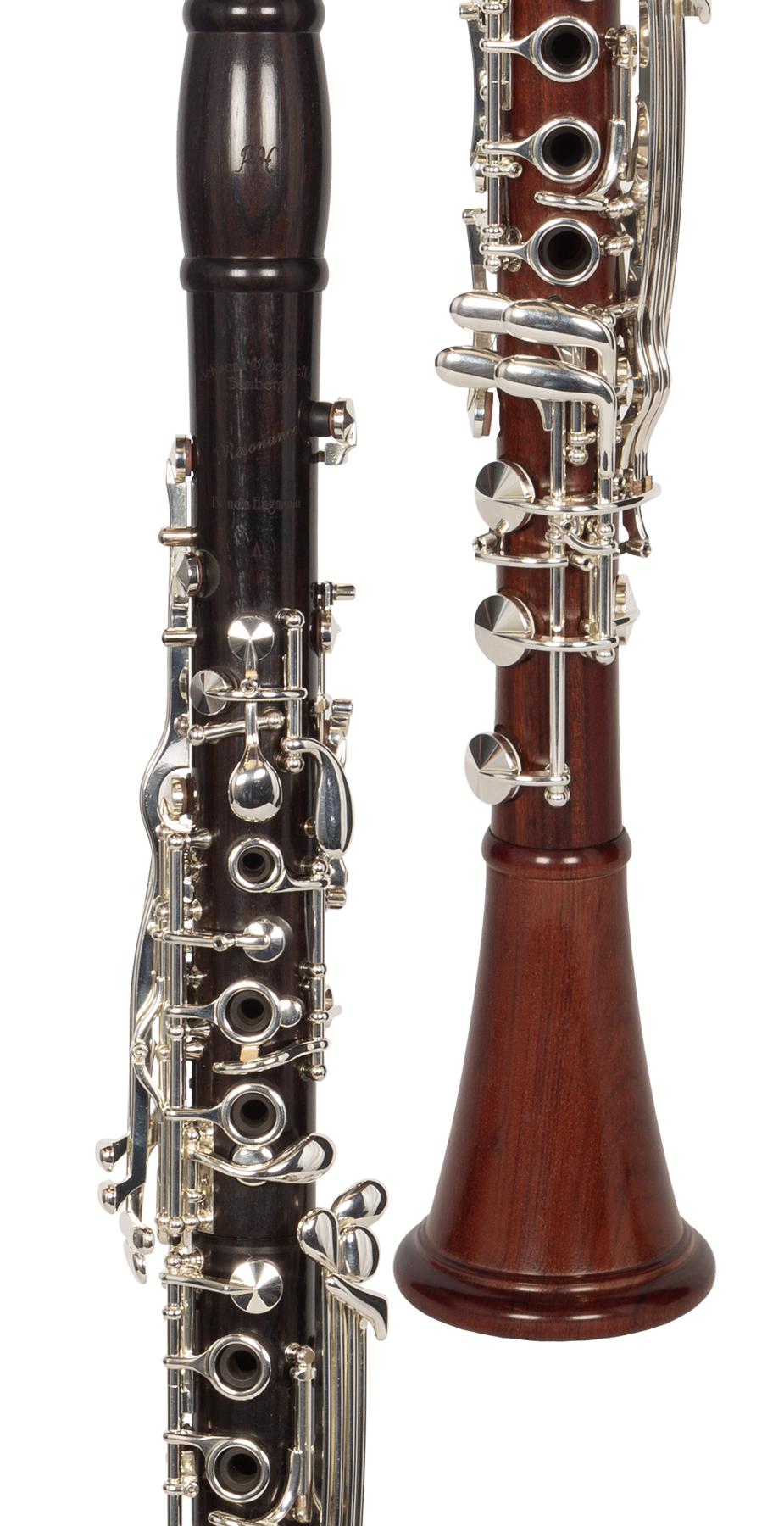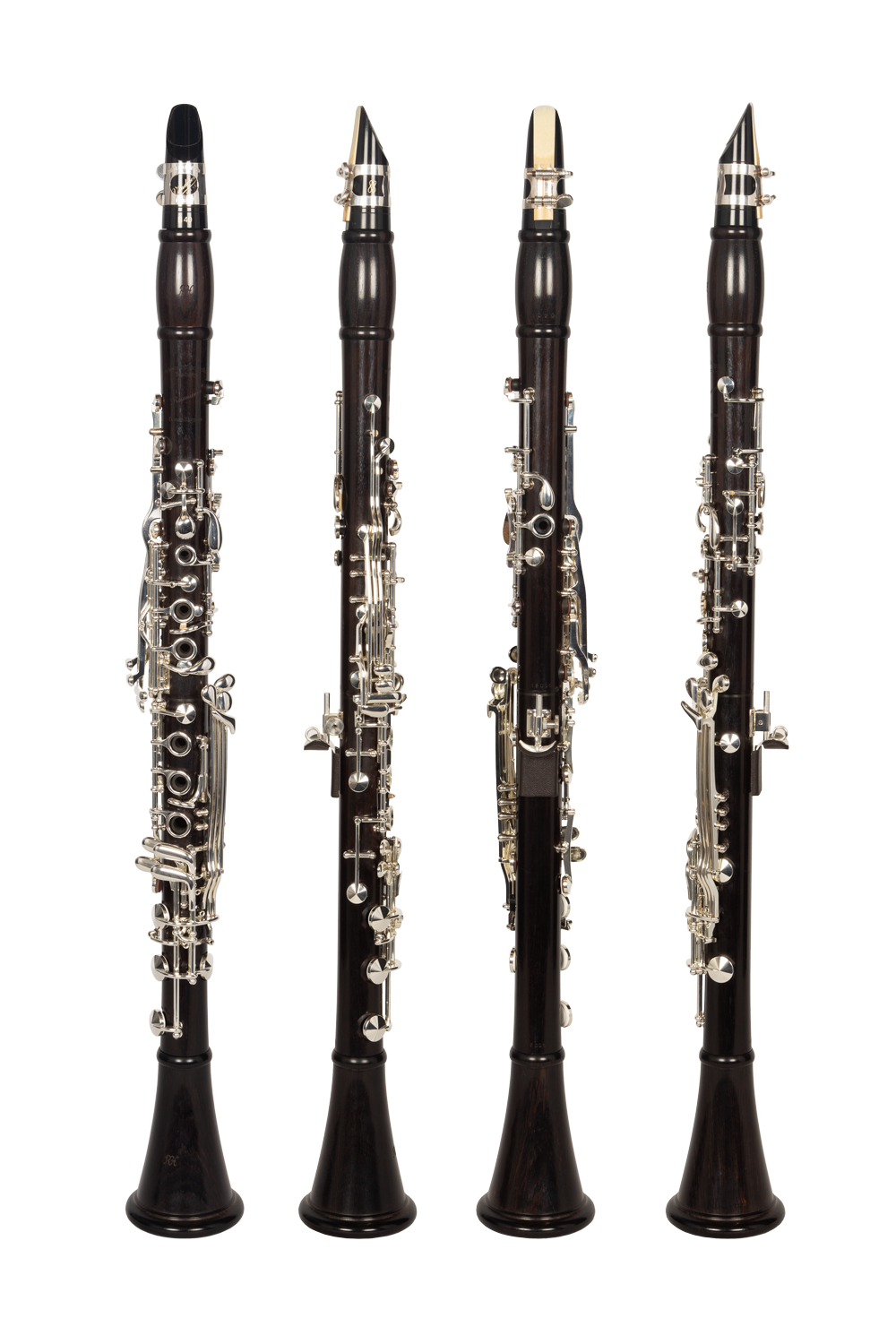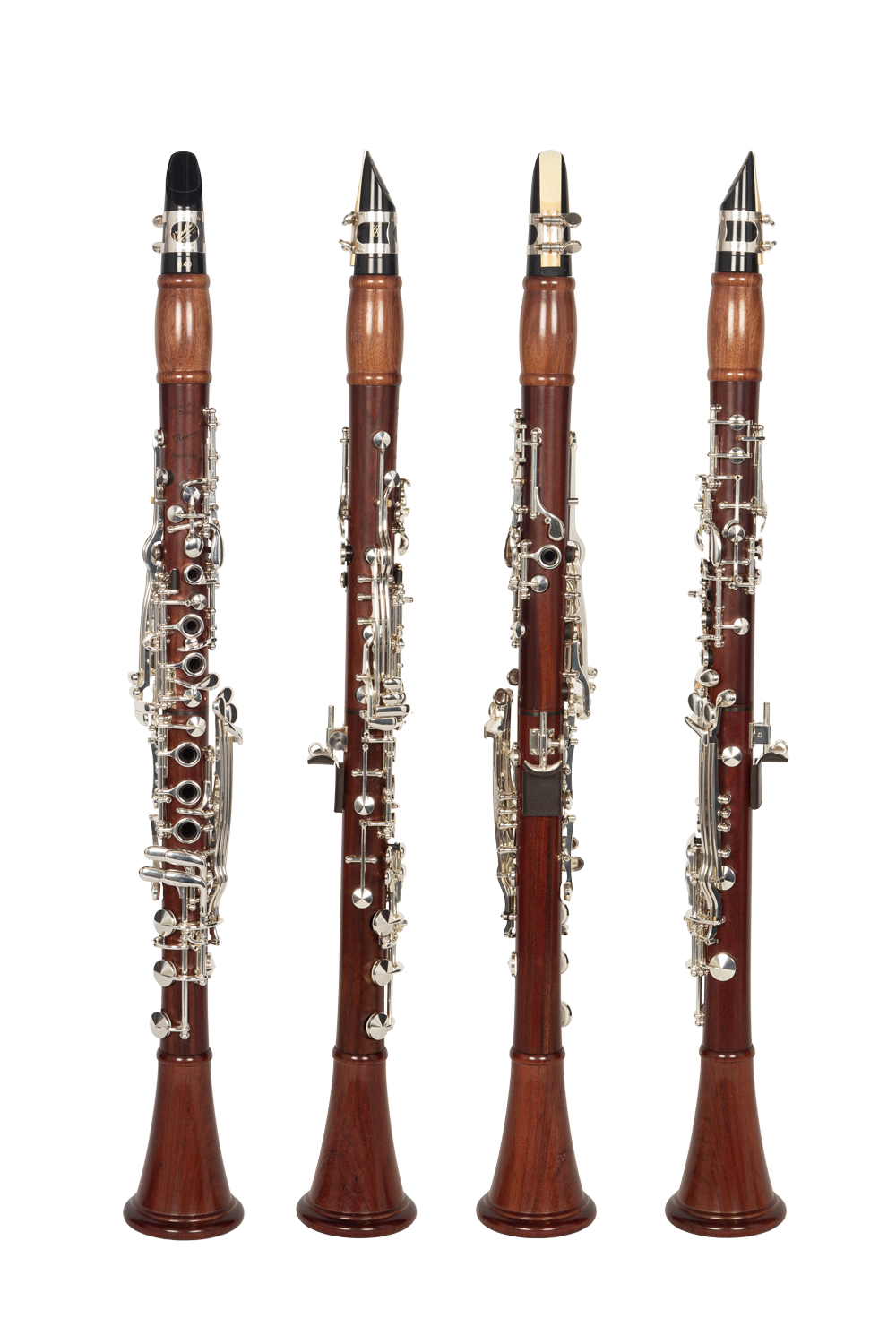RESONANCE® clarinet: technical specifications
Entirely handcrafted custom instrument: wood selection, bore, keys, assembly and tuning
1st choice grenadilla (Dalbergia Melanoxylon from Central Africa) body, bell and barrels, naturally seasoned for a long time, treated with linseed oil
Central tenon straddling over C-G hole
Carbon reinforcements
8 protruding holes (ebonite lined)
Nickel silver keys with double silver plating
“Quartz Resonanz” (special silicone) and “Olarte” (carbon + skin) pads
Special stainless-steel springs
Intonation from 440 to 443 Hz
Boehm fingerings and mouthpiece
Optimized Boehm-style bore
5 automatic resonance holes
Integrated articulated E-F# and B’-C# keys
F#’-C#” cadence key with elongated finger touch piece
Alternative Eb’-Bb”, new fingering using left index finger only
Clear “Schmidt “ Bb’
New designed pin-mounted key joints (no pointed screws)
Water-free cadence key holes
16 special, exclusive hi-tech adjustment screws
Resonance clarinets: the general concept
With a choice of various options, the instruments are all built individually, one by one, by hand. This traditional, uncompromising construction method ensures the highest quality, reliability and durability.
The addition of 5 resonance holes and the new chromatic configuration of the resonance holes gives the instrument unprecedented homogeneity of sound and controlled intonation. The fingering remains the standard Boehm system, with sound generated by a standard French-style mouthpiece (Vandoren, Selmer, etc.).
As the result of many years’ experience, René Hagmann has designed a new keywork and a new harmonization of these resonance holes, making the instrument very homogeneous and providing the musician with new sensations of playing comfort.
Long lasting seasoning combined with linseed oil treatment, the bodies are made of grenadilla or, as an option, premium quality mopane. The silver-finish nickel silver keys are exclusively hinge-mounted (no pointed screws).
Being the result of research and manufacturing expertise, the bore was designed by Jochen Seggelke (Seggelke Klarinetten). An excellent clarinetist, he is an expert designer of French, German and Austrian systems, as well as historical instruments.
Resonance clarinets: unique acoustic innovations
The concept of multiple resonance holes has been applied to optimize timbre homogeneity, emission and intonation ratios. The standard Schmidt-type clear Bb, or the optional Hagmann integral clear Bb, promotes precise 12th-note ratios and a homogeneous throat Bb. This optimized system allows all the special fingerings to be habitually used, but no longer necessarily.
A new alternative fingering option for Eb”/’B” is integrated: these two notes are obtained by simultaneously pressing the left index finger on its ring added to the new roll, moving the finger slightly forward. This fingering only monopolizes the left index finger, freeing the other fingers for easier access before or after any other fingerings. The quality of sound and intonation of both notes is very good, both in the fundamental tones and in their 12th, and, with a little practice, many situations are facilitated by this new fingering.
The emplacement of the G throat hole is off-axis, and its new position and length are now optimized. This “open” G is now in harmony with its register. This creation is the result of research by Jochen Seggelke.
The F# of the left thumb hole is backed up by a resonance hole, giving it a quality identical to that obtained with the second cadence key. This feature helps harmonize the throat notes.
The application of the “Acton” resonance key to the 3-ring key makes the sound of the B’-Fa#” and the high Eb”’ very homogeneous, a creation by E. Schmidt revisited by Jochen Seggelke.
Finally, the new emplacement of the central tenon on the “C‘/G’’ hole optimizes the acoustic distribution of the ‘D’/A‘’ resonance holes, as well as the emplacement of the ‘C#’/G#‘’ hole. In this way, the holes are positioned according to acoustic logic rather than the historical emplacement of the tenon, resulting in a unique homogeneity.
Many holes are protruding. This aids sound homogeneity due to pads tightness, while making them impossible to moisture.
Resonance clarinets: exclusive ergonomic innovations
Thanks to a different approach, all the left little finger keys (except C#-G#, key 6) are articulated in similar, more ergonomic movements. The Eb lever is integrated in the same way and has a very accessible shape.
A slight angular offset between the two bodies enhances comfort. With the same aim in mind, the choice was made for slightly rounded, semi-large rings.
The cadence keys can be accessed individually or in pairs, enabling new, subtle combinations. The specific design of the second cadence key makes it more specifically accessible for high C# and several other applications. All cadence key holes are above the so called “water line”.
The articulated mechanism of the E/Fa# low and B/Do# medium, supplied as standard, does away with the difficult so-called “scissor” fingerings and allows only one finger to be used instead of two.
Optional:
Rolls on C-sharp for the right hand little finger, in the Boehm Reform style.
Resonance clarinets: numerous technical innovations
The central tenon on the “C/G” allows ideal positioning for all emplacements, as well as the axes of the cadence keys. This new tenon is stabilized by two Rubco rings (a special, highly reliable agglomerated cork), giving it good tightness between the two bodies.
The adjustment studs are fitted with rational, stable screws with a large contact surface (designed by Hagmann/Seggelke).
Needle and flat springs are made of special stainless steel, for exceptional durability.
The keywork is fully articulated on long hinges, with stainless steel axes for extreme durability (Seggelke design).
The wood reinforcement rings are made of carbon. The padding is high-tech mixed, durable and silent. The thumb hump is made of hard-wearing Delrin®. Lastly, the 12th hole hump is screwed in for easy maintenance.
The pitons are made of stainless steel, with anti-noise O-rings (Hagmann design).
The E/B and F/C connections are easily adjustable by means of adjusting pins, offering great stability and no “crow’s feet”.



